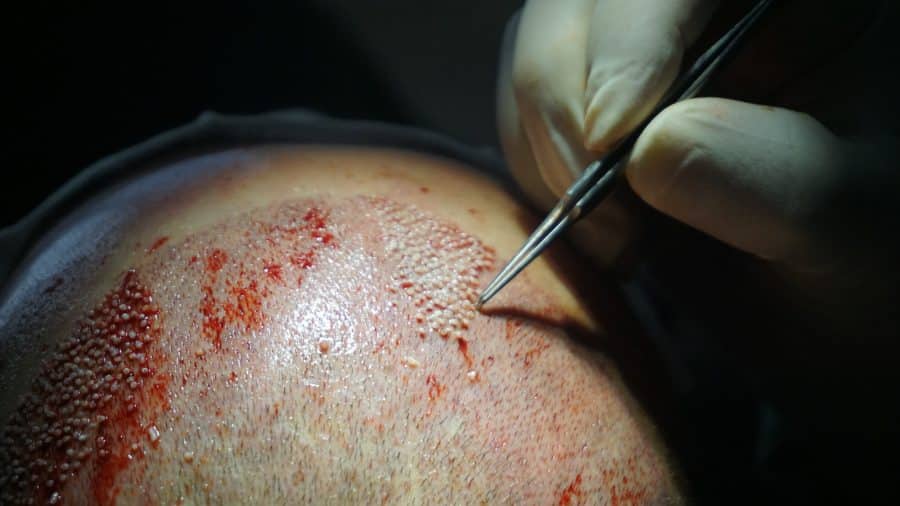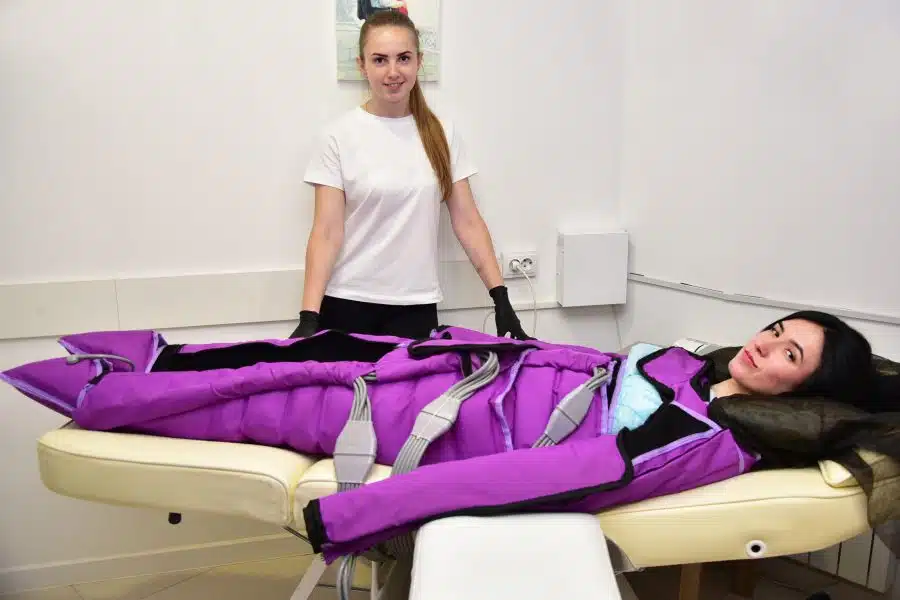Non-invasive fat removal procedures have gained popularity over the years, seemingly becoming a preferred weight-loss method. There are numerous non-invasive treatment options available, each tailored to specific preferences.
13,618,735 non-surgical procedures were performed, a number that has likely increased in the subsequent years. While nearly every treatment option could potentially work for you, it’s important to understand how to select a procedure that is both effective and safe. This article provides guidelines on choosing a non-invasive fat removal procedure:
1. Safety
Although non-invasive procedures are less intrusive than their invasive counterparts, ensuring their safety is paramount. These procedures primarily target fat but can potentially affect your skin, especially if it’s highly sensitive. Procedures such as SculpSure and CoolSculpting can be among the safest fat removal options, but it takes doing a little more to guarantee that.
The treatment is also practical and can reduce up to 20-25% of your fat. However, please consider these tips to ensure that either of your choices is safe:
- Research the provider: You’ll be more comfortable if your provider is qualified and experienced. Seek reviews and testimonials and consider engaging with a reputable provider.
- Disclose your medical history: Some medical conditions and treatments can significantly affect your procedure, sometimes leading to unforeseen adverse effects. Therefore, disclose your complete medical history before starting a fat removal procedure.
- Follow aftercare guidelines: Aftercare is as crucial as the procedure itself. Avoid certain activities, wear compression garments if required, and take medications as prescribed.
- Report any concerns: If you suspect the procedure didn’t go as planned or you’re experiencing specific reactions, report these concerns promptly.
Your fat removal procedure should be as safe as any at-home remedy for weight loss. A safer non-invasive fat removal procedure can be more effective, less likely to expose you to risks, and potentially provide the peace of mind you need.
2. Area of treatment
Some non-invasive fat removal treatments are more effective on specific areas of the body. For example, CoolSculpting can effectively target your abdomen, love handles, thighs, arms, and occasionally, your back. However, Vanquish may be more limited, effectively treating the flanks, abdomen, and back. Removing body fat from certain areas, such as the lower body, can be exceptionally challenging, and more potent procedures might be more suitable.
It’s advisable to conduct thorough research before settling on a non-invasive fat removal procedure. Ideally, you should start by identifying the area where you want to lose fat, whether it’s your abdomen or your back. Discussing with your provider can offer valuable insight into the most suitable treatment for you and inform you of its potential effectiveness.

3. Effectiveness
Fat removal procedures can cost quite a significant amount of money, a reason you should pick a more effective treatment that guarantees results. Please understand that non-invasive fat removal procedures can be your preferred option, but they may not be as effective as surgical treatments. Therefore, make your expectations more realistic and projected results more achievable.
Procedures like SculpSure can reduce up to 24% of body fat, while CoolSculpture can be marginally better with a single percentage higher. Other methods can also be more effective if you follow the treatment process. It’s always good to pick a procedure that can satisfy you with the results and get you near your weight loss target.
4. Downtime
The recovery period after a non-invasive fat removal procedure should inform your preference for these treatments over others. Generally, non-invasive fat removal procedures have shorter downtimes compared to surgical and invasive treatments, which should be less concerning. Despite offering faster recovery periods, it’s essential to understand how long complete healing takes post-treatment.
It’s also best to know the impact and side effects these procedures can have and whether or not you can cope with the downtime. Mostly, you may experience some swelling, tenderness, and softness, which is why it’s ideal to know how and if you can deal with them as you recover.
5. Cost
As the global non-invasive fat removal market grows fast, with a compound annual growth rate (CAGR) of 4.7%, it’s evident that the costs for each procedure will correspondingly increase. If you plan to undergo this fat removal procedure in the long term, it’s advisable to understand the potential cost implications, both now and in the future. Nonetheless, it’s wise to ascertain the current cost before proceeding with treatment.
Conclusion
Non-invasive fat removal procedures are attractive options due to their minimal side effects, quick process, and short downtime. However, understanding the factors that differentiate certain procedures from others can be beneficial. Choosing the best and most practical non-invasive fat removal option can help you maximize the benefits of your treatment in terms of cost-effectiveness and results.
Hair restoration has become increasingly popular in recent years thanks to advancements in technology and the expertise of highly skilled surgeons. This procedure is sought after by individuals who have experienced hair loss or those who wish to alter their hairline.
With the help of modern techniques, hair restoration can provide a natural-looking and long-lasting solution to hair loss.
But What’s Hair Restoration?
Hair restoration or hair transplant is a surgical process that entails transferring hair follicles from any part of the body to the hairless portion of your head. Many people are giving in to the procedure to restore their hair and improve their overall appearance.
There are two types of hair restoration: follicular unit extraction (FUE) and follicular unit transplantation (FUT). Both techniques have been proven and are effective in restoring your hair.
However, though the techniques are effective, their success rate depends on your surgeon’s experience. Therefore, choose a professional who’s experienced in handling such procedures. To prove the authenticity of the surgeon, ask for before and after hair transplant photos of their previous patients so you know what to expect.
Besides choosing a surgeon, choosing between FUE and FUT can be challenging. So, if you’re planning a hair restoration process but want to know which technique to use, keep reading.
Follicular Unit Extraction
FUE is a minimally invasive procedure that entails extracting hair follicles from the donor area and transferring them to the recipient area. In other words, the surgeon removes individual hair follicles from any part of the body, and the follicles are placed gently in incisions at the recipient area. This process is done while the patient is under local anesthesia, and the follicles are extracted using micro punches.
The best candidate for the FUE procedure is an individual with thinning hair. You can only be eligible for FUE if you have enough healthy hair to be used for the transplant.
FUE is often performed in multiple sessions of about two to four hours for a few days. FUE costs between $4,000 and $15,000 per session, but the price varies depending on how many individual follicles are extracted.
The hair transplanted in the recipient area may grow in about three to four months. It may provide natural-looking and permanent results, but this depends on the physician’s experience, the quality of the donor’s hair, and the patient’s overall health.
The FUE procedure is safe but can have minimal side effects, such as tiny temporal scars. In rare cases, an infection can affect the recipient area leading to tissue death. Also, after the surgery, you may experience side effects such as sensitivity, swelling, and bruising that go away after a few days.
Pros And Cons Of FUE
To help you understand the FUE procedure, here are some associated benefits and drawbacks:
Pros
- Hair follicles can be sourced from other body parts
- Less pain after surgery
- Viable even if you have poor hair density
- It doesn’t leave permanent scars
- Quicker healing time
Cons
- Provides a limited number of grafts
- Since follicles are extracted individually, the procedure can be time-consuming
- It can be more expensive due to longer procedure time
- Follicles are extracted using a punch tool, increasing the risk of graft damage
These pros and cons depend on the patient’s needs and the physician’s experience.

Follicular Unit Transplantation
FUT, also known as the strip procedure, is a technique that entails stripping a part of a scalp from the back of the head. The area where the scalp is removed is stitched up. Then, the removed scalp is separated into smaller units to extract the hair follicles. The small units are called grafts.
The physician makes small holes in the recipient area and inserts the grafts. FUT procedure is quicker than FUE, as it takes a single session lasting between four and eight hours. Like FUE, the ideal candidate for FUT is someone with enough healthy hair follicles to be used as transplants.
FUT costs between $4,000 and $10,000, depending on the procedure size. However, FUT is cheaper because you’re buying in bulk; you get more grafts for the money rather than paying for individual follicles.
FUT procedure produces better results since it yields more hair for transplant. It means FUT is a better option in cases where extensive grafts are needed. FUT also has better results since the grafts are dissected using a microscope, meaning the follicles have less damage.
Complications after a FUT procedure are rare. However, there might be potential complications in severe cases, which go away after some time. These are unnatural-looking hair, bleeding, swelling, pain, and numbness. Also, the FUT procedure leaves a permanent scar in the donor area.
Pros And Cons Of FUT
If you’re wondering whether FUT is for you, get some insights from the following pros and cons.
Pros
- Provides a larger number of hair grafts
- Shorter procedure time
- Less expensive
- Minimal damage to grafts
Cons
- Leaves a scar in the donor area
- Limited donor area
- Can be painful
- Scars can take time to heal
Conclusion
There you go! This guide will give you insights into the differences between FUE and FUT. Your choice between the two depends on your unique needs and preferences. For instance, if you need more significant grafts in the shortest time possible, then FUT is your preferred option. However, if you’re for an option that will heal quickly and leave no scars, FUE is for you.



